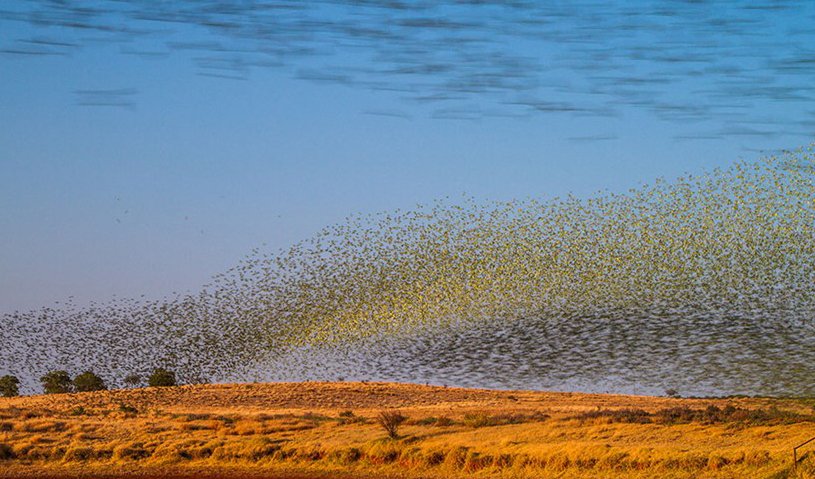How Australian budgies cope with the harsh desert climate

RESEARCHERS FROM Curtin University have discovered that, much like mammals, budgies (Melopsittacus undulatus) have the ability to regulate the water they lose through their skin.
The study, published last week in the journal Proceedings of the Royal Society B, is the first to reveal budgies have developed this physiological function to cope with Australia’s harsh desert climate.
Christine Cooper, a Senior Lecturer in the Department of Environment and Agriculture and author of the paper said that it was particularly interesting that birds and mammals have developed similar ways of adapting to different environmental conditions.
“Our finding of apparent regulation of evaporative water loss at moderate temperatures in birds suggests that this ability could be a common feature of these two different groups of animals,” she told Australian Geographic.
Controlling water loss
To better understand how budgies were coping with the desert climate, birds were placed in a simulated nest box overnight where levels of humidity were alternated.
Throughout the study the budgies evaporative water loss and their rate of breathing was measured.
Christine explained that while the exact physiological mechanism that budgies use to control their water loss is currently not known, there are some possible explanations.
“They might be changing the temperature of the air they breathe out to control how much water is in it and so regulate how much water they use.
“Alternatively, they might be changing the evaporative water loss through their skin, by changing their skin temperature, blood circulation or fats in the skin.”
She says that by further observing expired air temperature, skin evaporation and temperature of different birds she’s hoping to better understand these mechanisms.
“We have started some experiments using an infra-red camera to measure the expired air temperature of parrots, and we will do some experiments on skin water loss in the next year. Based on the results of our budgie study, we suspect that it may be changes in water loss through the skin”

A flock of budgies in Alice Springs. (Image Credit: Paul Williams)
Evolutionary adaption
According to Christine, the new study has highlighted what factors are important in driving evolutionary adaptations to Australia’s climate.
“Regulation of evaporative water loss at moderate ambient temperatures is common to birds and mammals despite them not being closely related, so it must be fundamentally important to how they function.
“We suspect that water loss control is important for allowing birds and mammals to keep their body temperature constant, even at moderate ambient temperatures.
“Maintaining a certain body temperature is of critical importance to birds and mammals, and is even more important than maintaining water balance.”
Christine is looking forward to understanding how birds from with varying habitats, size and with diets cope with the climate.
“This will give us information about why birds regulate their water loss; to save water or to help to control their body temperature.”
READ MORE:
- GALLERY: stunning flocks of budgies in Alice Springs.
- 10 beautiful birds to look out for in the Red Centre.




